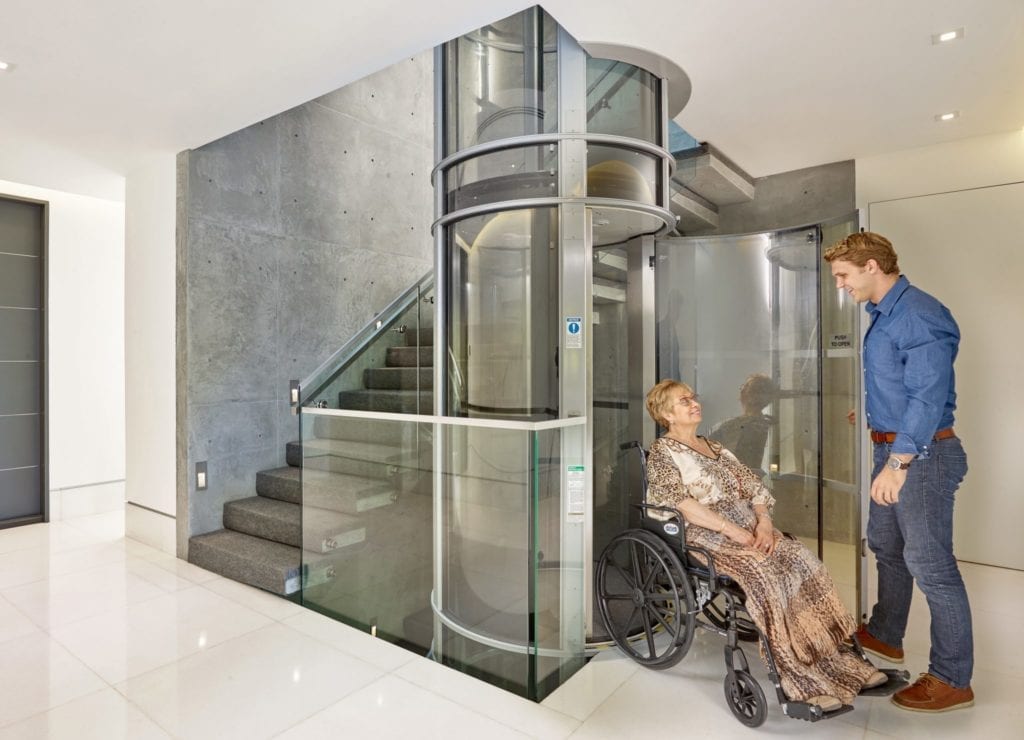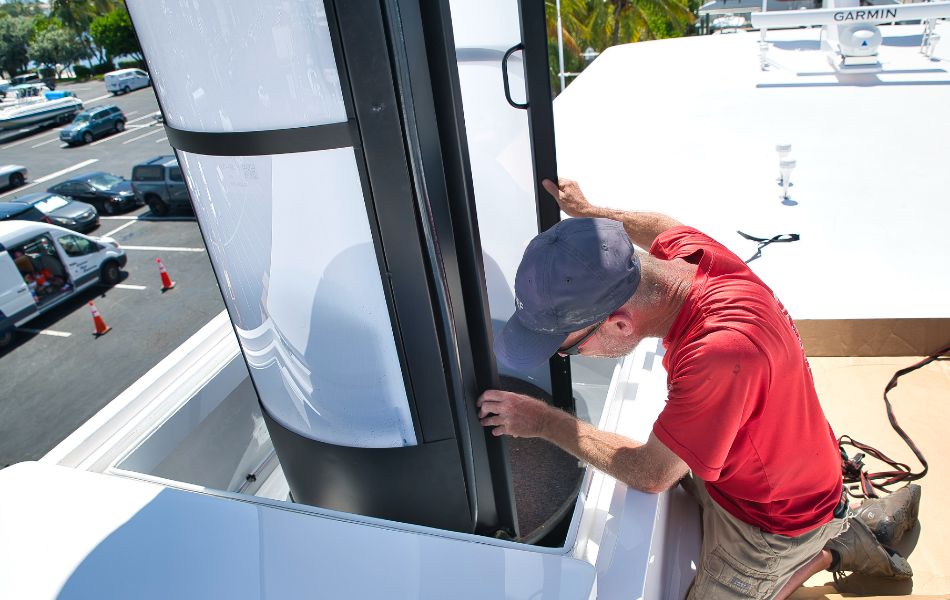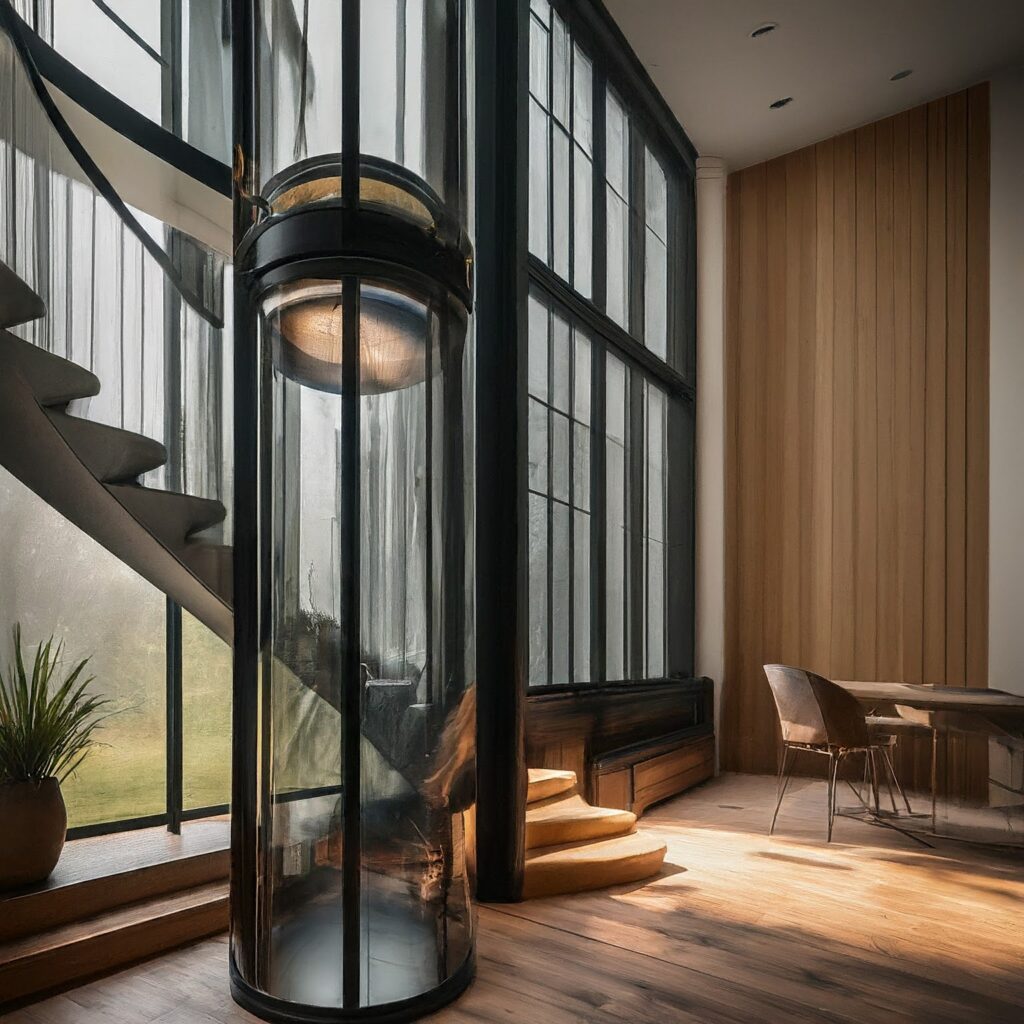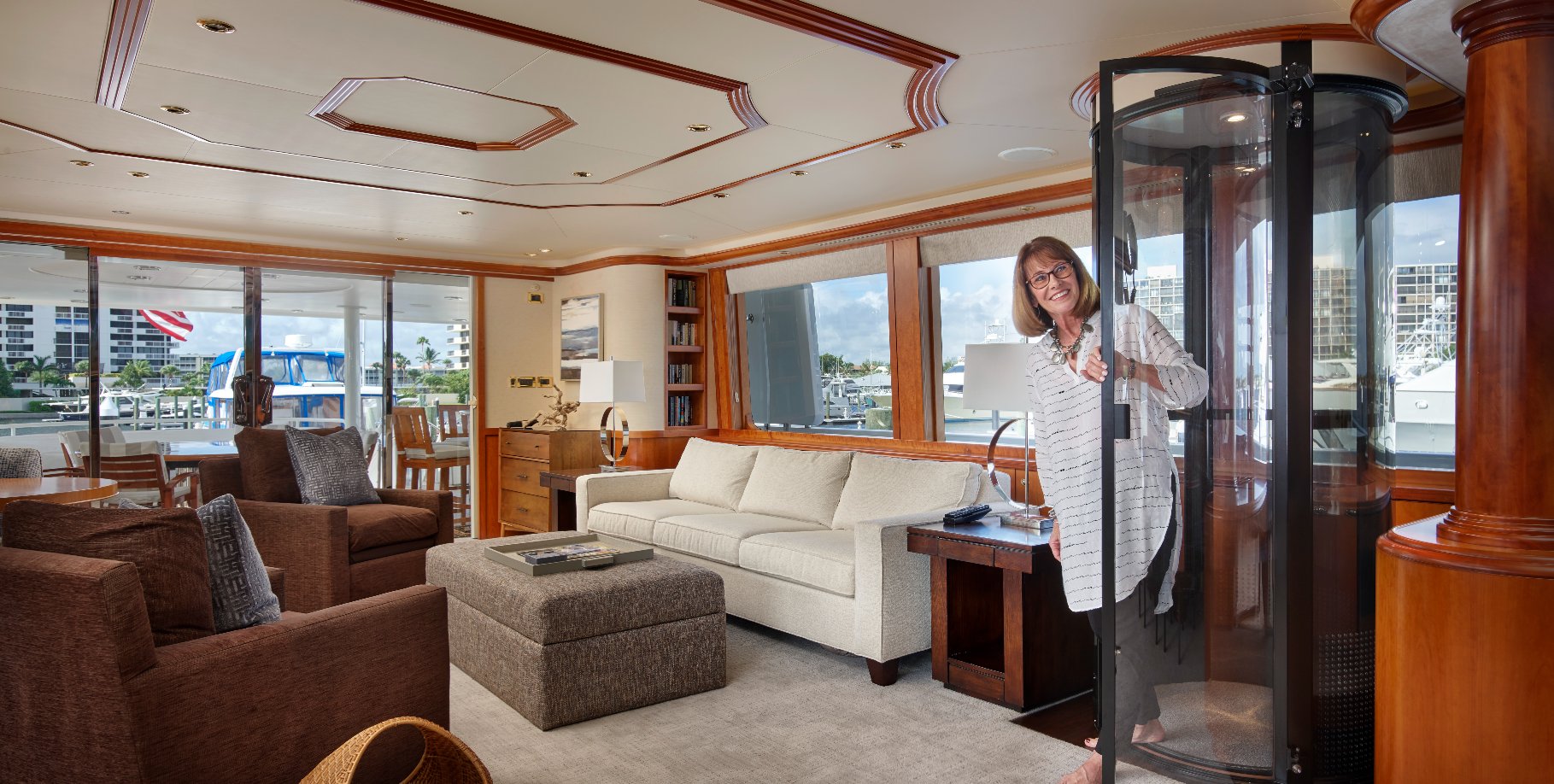For individuals using wheelchairs, navigating multi-level homes can be a significant challenge. Thankfully, residential wheelchair lifts offer a safe and reliable solution, promoting independence and improving overall quality of life. This comprehensive guide delves into the intricate world of residential wheelchair lifts, exploring various types, technical considerations, installation processes, and advanced features.
Types of Residential Wheelchair Lifts

Understanding the different types of residential wheelchair lifts is crucial for selecting the most suitable option for your needs. Here’s a breakdown of the two main categories:
- Vertical Platform Lifts (VPLs): These electrically powered lifts function similarly to elevators, raising and lowering a platform with the user and wheelchair onboard. VPLs are ideal for overcoming significant height differences between floors. They can be further categorized into:
- Indoor VPLs: Designed for interior use, these lifts typically operate on a dedicated track system installed alongside a wall. They offer various configurations, including single-stop lifts for basements or attics, and multi-stop models for accessing multiple levels.
- Outdoor VPLs: Engineered for withstanding weather elements, outdoor VPLs provide access to decks, porches, or elevated entrances. They often boast sturdier construction and may have weatherproof enclosures.
- Inclined Platform Lifts (IPLs): These lifts travel along a diagonal track, following the incline of existing stairs. IPLs are a space-saving solution for navigating straight staircases, offering a smooth and comfortable ride. They come in various lengths to accommodate different staircase configurations.
Beyond these primary types, there are also specialized options, such as:
- Curved Stair Lifts: Designed for staircases with turns or landings, these lifts feature a track that curves along the stair path, ensuring a safe and comfortable ascent and descent.
- Portable Wheelchair Lifts: These lightweight, foldable lifts offer temporary accessibility solutions. They are ideal for occasional use or overcoming small height differences.
Technical Considerations for Residential Wheelchair Lifts
Selecting the right residential wheelchair lift requires careful consideration of several technical factors:
- Weight Capacity: Lifts have designated weight limits to ensure safe operation. Consider the weight of the wheelchair user, the wheelchair itself, and any potential additional occupants or cargo.
- Platform Size: Platform dimensions should comfortably accommodate the wheelchair user with ample space for maneuvering. Standard platform sizes are available, but some manufacturers offer custom options.
- Door Options: Choose between manual or automatic doors for the platform. Automatic doors enhance ease of use and safety.
- Lift Speed: Lift speed determines travel time between floors. While faster speeds are convenient, prioritize safety and user comfort, especially for individuals with balance issues.
- Power Source: Most residential lifts operate on standard household electricity. However, some models offer battery backup for power outages.
- Safety Features: Essential safety features include emergency stop buttons, safety sensors to prevent operation with the platform door open, and automatic leveling mechanisms.
Installation Process for Residential Wheelchair Lifts

Installing a residential wheelchair lift is a complex process that should be carried out by a qualified professional. Here’s a general overview of the steps involved:
- Site Assessment: A certified technician will evaluate the home’s layout, available space, and structural integrity to determine the most suitable lift type and placement.
- Permitting: Obtaining necessary permits from local authorities might be required depending on your location.
- Electrical Work: Installing a dedicated electrical circuit to power the lift might be necessary.
- Lift Installation: The technician will meticulously install the lift track system, platform, and safety features according to manufacturer specifications.
- Testing and Training: Once installed, the technician will thoroughly test the lift’s functionality and provide operation and safety training to the user.
Advanced Features in Residential Wheelchair Lifts
Modern residential wheelchair lifts offer an array of advanced features to enhance user experience and safety:
- Folding Platforms: Certain VPLs have platforms that fold up when not in use, minimizing space occupied when not needed.
- Voice-Activated Controls: This technology allows hands-free operation of the lift, ideal for individuals with limited upper body mobility.
- Smartphone App Integration: Some lifts can be controlled and monitored remotely using a smartphone app, offering increased convenience and peace of mind.
- Automatic Call Systems: These systems can automatically connect users with emergency services in case of entrapment within the lift.
- Two-Way Communication Systems: Built-in intercoms enable communication between the user on the platform and someone at a different level of the home.
Cost Considerations for Residential Wheelchair Lifts
The cost of a residential wheelchair lift varies depending on several factors, including:
- Lift Type: VPLs are generally more expensive than IPLs due to their complex design.
- Features: Advanced features like automatic doors or voice-activated controls increase the cost.
- Customization: Custom platform sizes or additional safety features can add to the overall price.
- Installation Complexity: Complex installations requiring structural modifications or extensive electrical work can be more costly.
Here’s a ballpark range for residential wheelchair lift costs:
- Basic VPLs: $3,000 – $7,000
- Standard VPLs with additional features: $7,000 – $15,000
- High-end VPLs with advanced features and customization: $15,000+
- Standard IPLs: $5,000 – $10,000
- Curved Stair Lifts: $10,000 – $20,000+
Financial Assistance Programs:
Government grants, veteran benefits, and disability assistance programs might offer financial aid to help offset the cost of installing a residential wheelchair lift. Researching available programs in your area can significantly reduce the financial burden.
Maintenance and Safety for Residential Wheelchair Lifts
Regular maintenance is crucial for ensuring the safe and reliable operation of your residential wheelchair lift. Here are some key points to remember:
- Manufacturer’s Recommendations: Follow the manufacturer’s recommended maintenance schedule, typically involving periodic inspections, lubrication, and adjustments by a qualified technician.
- Visual Inspection: Regularly check the lift for any signs of wear and tear, damage to components, or loose parts. Report any concerns to a qualified service provider.
- Battery Backup (if applicable): Ensure the battery backup system is functional and regularly test its capacity to power the lift during a power outage.
- User Training: Review and practice operating procedures regularly with all users of the lift.
Conclusion
Residential wheelchair lifts play a transformative role in promoting independence and enhancing the quality of life for individuals using wheelchairs. By understanding the various types of lifts, technical considerations, and advanced features available, you can make an informed decision that best suits your needs and home environment. Remember, professional installation, regular maintenance, and user safety training are paramount for ensuring a smooth and safe experience with your residential wheelchair lift.
Frequently Asked Questions about Residential Wheelchair Lifts
What factors should I consider when choosing a residential wheelchair lift?
Selecting the right residential wheelchair lift hinges on several crucial factors. Here’s a breakdown of the key considerations to weigh in on:
- Type of Lift: First, evaluate your home layout and accessibility needs. Vertical platform lifts (VPLs) are ideal for overcoming significant height differences between floors, while inclined platform lifts (IPLs) are space-saving solutions for navigating straight staircases. Curved stair lifts cater to staircases with turns or landings, and portable lifts offer temporary accessibility solutions.
- Weight Capacity: The lift you choose must have a weight capacity sufficient for the user, the wheelchair itself, and any potential additional occupants or cargo. Exceeding the weight limit can compromise safety and damage the lift.
- Platform Size: The platform should comfortably accommodate the wheelchair user with ample space for maneuvering. Standard platform sizes are available, but some manufacturers offer custom options for users with larger wheelchairs or those requiring additional space for legroom or a service animal.
- Door Options: Decide between manual or automatic doors for the platform. Automatic doors enhance ease of use, especially for individuals with limited upper body mobility, and contribute to overall safety by preventing accidental operation with the door open.
- Safety Features: Essential safety features include emergency stop buttons, safety sensors to prevent operation with the platform door open, and automatic leveling mechanisms for a stable platform during use.
What is the installation process for a residential wheelchair lift?
Installing a residential wheelchair lift is a specialized task best undertaken by a qualified professional. Here’s a general outline of the process to expect:
- Site Assessment: A certified technician will meticulously evaluate your home’s layout, available space, and structural integrity to determine the most suitable lift type and placement. This assessment ensures the chosen lift can be safely and effectively installed within your home environment.
- Permitting: Depending on your location, obtaining necessary permits from local authorities might be required before installation can commence. Consulting with the technician or a local building department can clarify any permitting needs specific to your area.
- Electrical Work: Installing a dedicated electrical circuit to power the lift might be necessary. A qualified electrician will handle this crucial aspect of the installation, ensuring the lift receives the appropriate electrical supply for safe and reliable operation.
- Lift Installation: The technician will meticulously install the lift track system, platform, and safety features according to the manufacturer’s specifications. This involves precise measurements, secure anchor points, and proper electrical connections.
How much does a residential wheelchair lift cost?
The cost of a residential wheelchair lift varies depending on several factors:
- Lift Type: VPLs are generally more expensive than IPLs due to their complex design and additional components.
- Features: Advanced features like automatic doors, voice-activated controls, or smartphone app integration add to the overall cost.
- Customization: Custom platform sizes or additional safety features can increase the price.
- Installation Complexity: Complex installations requiring structural modifications or extensive electrical work can be more costly.
Here’s a rough estimate for residential wheelchair lift costs to give you an idea:
- Basic VPLs: $3,000 – $7,000
- Standard VPLs with additional features: $7,000 – $15,000
- High-end VPLs with advanced features and customization: $15,000+
- Standard IPLs: $5,000 – $10,000
- Curved Stair Lifts: $10,000 – $20,000+
Are there financial assistance programs available for residential wheelchair lifts?
Absolutely! Government grants, veteran benefits, and disability assistance programs might offer financial aid to help offset the cost of installing a residential wheelchair lift. Researching available programs in your area can significantly reduce the financial burden associated with acquiring a lift.
Additional Resources:
- National Center for Universal Design: https://design.ncsu.edu/research/center-for-universal-design/
- The Christopher & Dana Reeve Foundation: https://www.christopherreeve.org/
- The Rehabilitation Engineering and Assistive Technology Society of North America (RESNA): https://www.resna.org/








